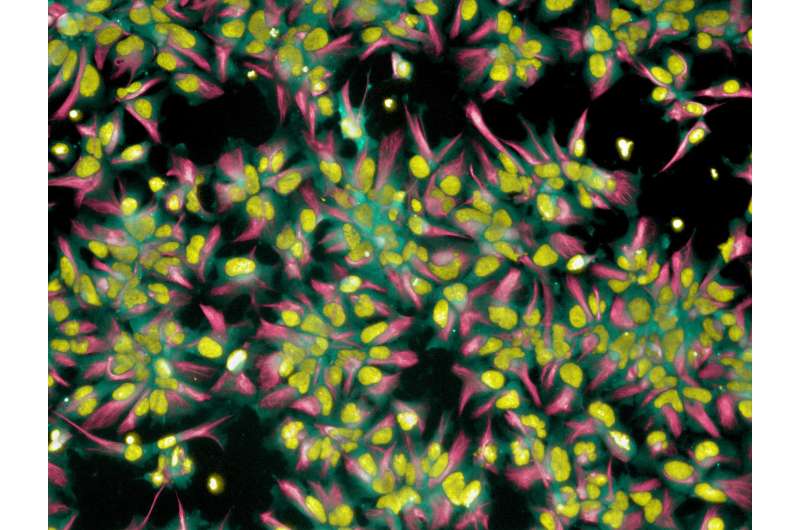The interactome of infected neural cells reveals new therapeutic targets for Zika

Zika virus (ZIKV) interferes with the cellular machinery controlling cell division and alters the expression of hundreds of genes guiding the formation and development of neurons and astrocytes, according to findings released on January 23rd 2017 at Scientific Reports.
Several evidences indicate that ZIKV infection is associated with microcephaly—a condition in which baby's head is abnormally small, often because the brain has not developed properly—and other fetal brain defects. Despite the association, cellular alterations caused by the virus are largely unknown. "Elucidate the underpinnings of ZIKV infection is very important to develop tools to combat it", points Stevens Rehen, head of the study and scientist at both D' Or Institute for Research and Education (IDOR) and Institute of Biomedical Sciences at Federal University of Rio de Janeiro (UFRJ).
In a previous study published in Science, the same Brazilian scientists noticed that the pool of infected neural stem cells was completely depleted after one week. In the present study, they decided to explore how neural cells react to ZIKV infection before dying. To do so, human neural cells were exposed to a strain of ZIKV collected from a Brazilian patient and coaxed to become neurospheres, organized aggregates of neural cells resembling fetal brain tissue.
By means of state-of-the-art techniques, researchers evaluated the interactome map - a whole set of molecular interactions - of the infected neural cells in order to understand the ZIKV-related impairment on cellular metabolism.
To identify the molecular fingerprints of the ZIKV infection, the authors investigated gene and protein expression in both infected and non-infected cells.
The analysis revealed more than 500 genes/proteins altered in the infected developing brain cells. A few of them associated with DNA damage and chromosomal instability, such as aneuploidy. Others, normally active during cellular division, were silenced in infected cells, thwarting their ability to multiply.
In addition, genes driving cell specialization were repressed in ZIKV infected cells. As a result, neural cells lacked the guidance to differentiate into specialized brain cells.
Also, a common strategy employed by viruses when infecting cells was observed: factors involved in viral replication were upregulated.
According to Patricia Garcez, Assistant Professor at the UFRJ and author of the study: "these findings provide insights into the molecular mechanisms of ZIKV infection and likely explain some of the consequences seen on brain formation and function at these crucial points of brain development".
More information: Scientific Reports, www.nature.com/articles/srep40780



















